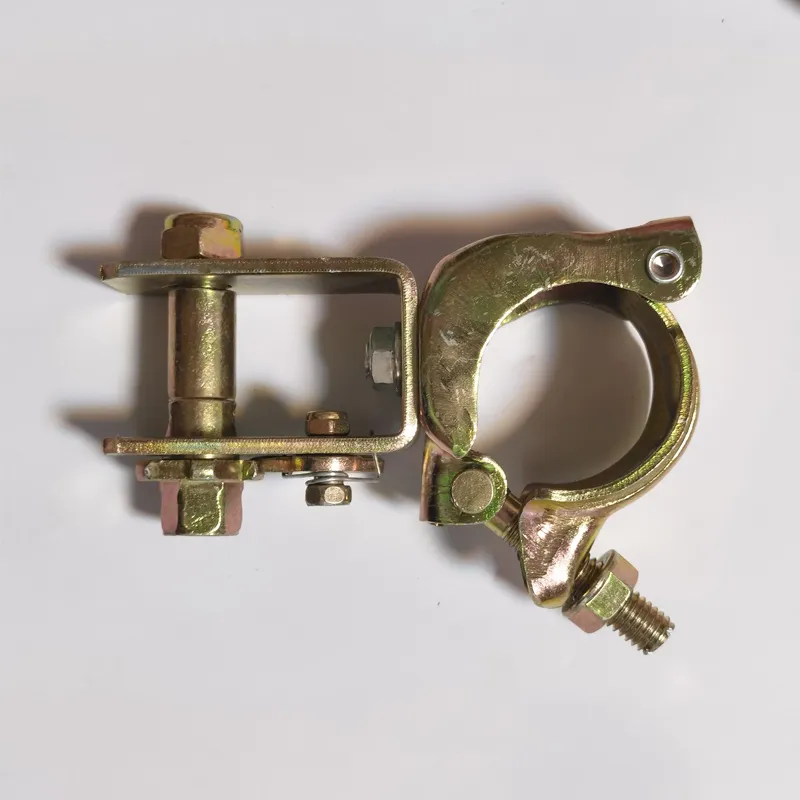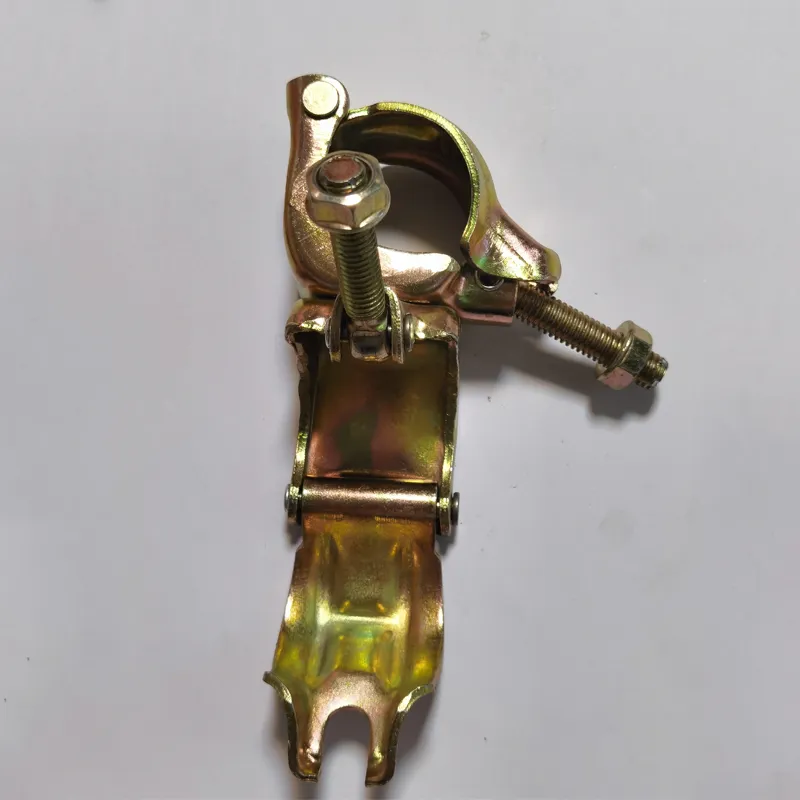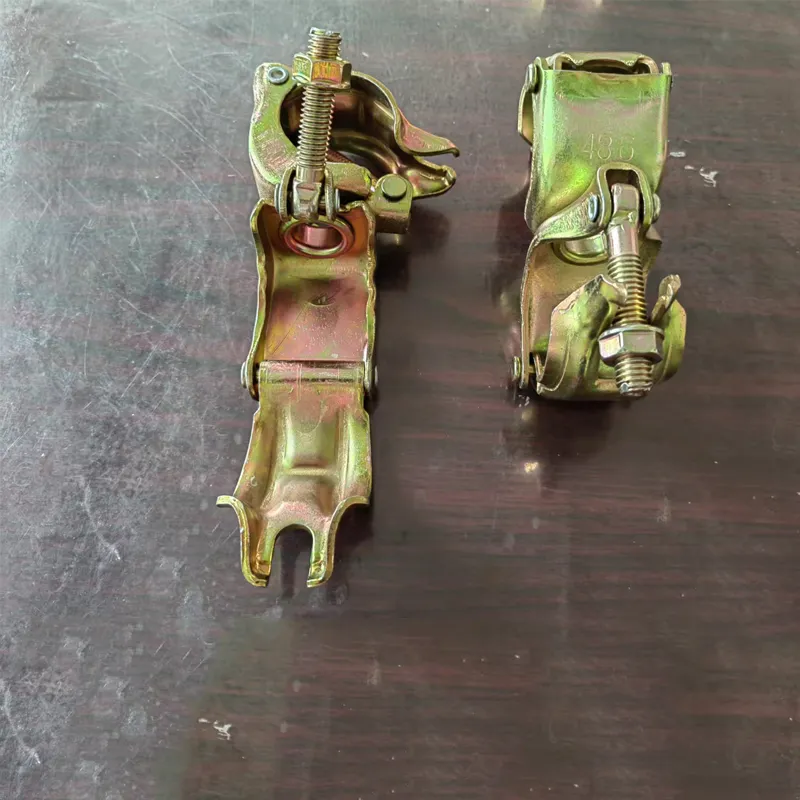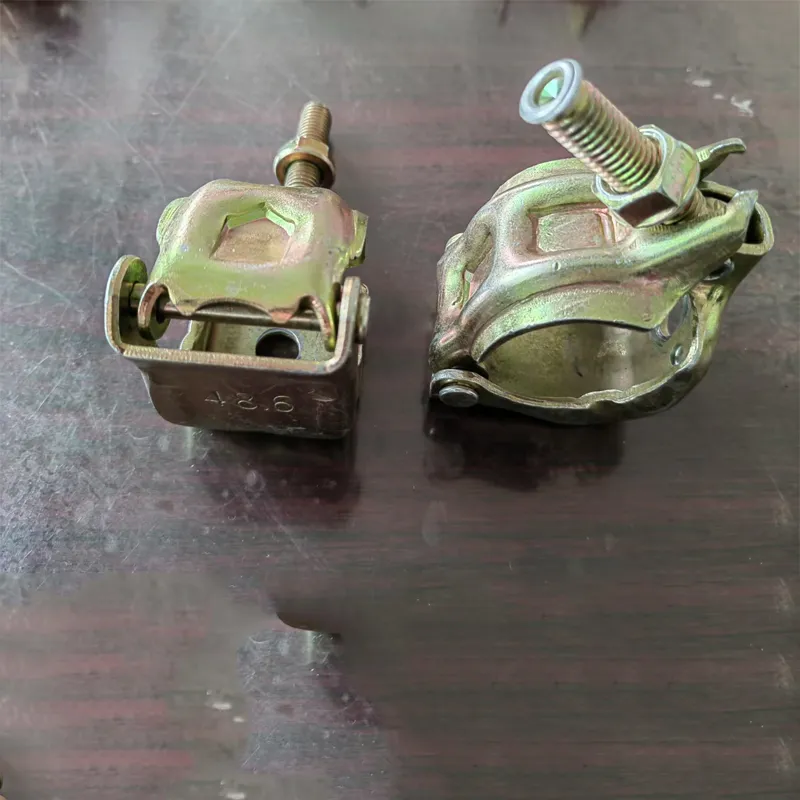
Oct . 11, 2025 10:05 Back to list
Scaffolding Clamps - Heavy-Duty, Rust-Resistant, Wholesale
Hands-On Notes from the Field: Scaffolding Clamps for Greenhouses and Beyond
If you’ve built a greenhouse frame—or any temporary steel structure—you already know the unsung heroes are the connectors. Our Scaffolding Clamps come out of Hebei, China, and, to be honest, they’ve surprised a few seasoned site managers with how well they hold up in wet, windy, mixed-weather installations.

What’s trending (and why it matters)
There’s a quiet shift happening: more growers and contractors want drop-forged, hot-dip galvanized fittings—less flashy, more durable. Demand is driven by greenhouse expansions, pop-up logistics bays, and event staging that needs quick install, quick tear-down, minimal rework. Many customers say the Scaffolding Clamps save them hours because they “bite” consistently at torque, even after months outdoors.

Process flow, materials, and testing (the real nuts and bolts)
- Materials: Carbon steel (commonly Q235/45#); high-strength bolts and nuts.
- Manufacturing: Drop-forged or pressed steel bodies; CNC-threaded fasteners for repeatable torque.
- Coating: Zinc galvanizing—electroplated (≈8–12 μm) or hot-dip per ISO 1461 (≈45–85 μm). Real-world use may vary.
- Heat treatment: Controlled for strength and ductility where applicable.
- Testing: Torque proof (≈45 N·m ±5), slip resistance per EN 74, dimensional checks, salt spray (ASTM B117; 72–240 h), batch traceability under ISO 9001.
- Service life: Inland installs ≈10–15 years hot-dip galvanized; coastal ≈5–8 years. Maintenance changes everything.
- Origin: XIHUAN ROAD HEXI TOWN LINXI COUNTY HEBEI PROVINCE CHINA.

Key specs (field-proven)
| Item | Details |
|---|---|
| Types | Fixed, Swivel, Clamp-In, Single Clamp |
| Material | Carbon steel; high-tensile bolts |
| Coating | Zinc galvanized (electro or hot-dip per ISO 1461) |
| Pipe sizes | 32 mm, 48 mm, 60 mm (customized) |
| Recommended torque | ≈45 N·m (check project spec) |
| Slip/Clamp capacity | Around 6–9 kN per EN 74 tests, type-dependent |
| Unit weight | ≈0.9–1.2 kg each (varies by type) |

Where they shine
Scaffolding Clamps are built for greenhouse frameworks, construction access towers, temporary bracing, event truss tie-ins, even shipyard and yard-storage bays. Actually, I’ve seen them on community gardens—tight footprint, big stability. Feedback? “No re-tightening after storms,” one Oregon grower told us. Another contractor noted: “Threads still smooth after three rotations across sites.”
Vendor comparison (quick reality check)
| Criteria | ARY Bearing | Local Generic | Low-Cost Import |
|---|---|---|---|
| Standards | EN 74 / BS 1139 aligned | Varies by batch | Often unspecified |
| Coating | Hot-dip option (ISO 1461) | Electro only | Electro thin (≈6–8 μm) |
| QC & testing | Torque, slip, salt-spray | Basic visual | Inconsistent |
| Lead time | ≈15–25 days | Stock dependent | ≈30–45 days |
| Customization | Pipe sizes, logos, packing | Limited | Rare |

Customization and quick case notes
- Customization: 32/48/60 mm pipes (and special), private logo, bolt grades, coating thickness, carton/pallet labeling.
- Oregon greenhouse co-op: 1,200 pcs, hot-dip galvanized; zero replacements after first storm season; install torque held steady.
- Coastal logistics yard: switched to hot-dip Scaffolding Clamps; corrosion complaints dropped ≈70% vs. previous electro-only stock.

Certifications, compliance, and the fine print
Scaffolding Clamps are produced under ISO 9001 QMS with testing protocols referencing EN 74 and BS 1139. For jobsite safety, align tightening and load assumptions with your engineer’s calcs and local code (OSHA 1926 Subpart L in the U.S.). As always, real-world loads, weather, and installer technique affect outcomes.
References
- EN 74-1/2: Couplers, spigot pins and baseplates for use in working scaffolds.
- BS 1139-2.2: Metal scaffolding — couplers and fittings.
- OSHA 1926 Subpart L: Scaffolds.
- ISO 1461: Hot dip galvanized coatings on fabricated iron and steel articles.
- ASTM B117: Standard Practice for Operating Salt Spray (Fog) Apparatus.
- ISO 9001: Quality management systems — Requirements.
Latest news
-
Ball Bearing 6001 – Reliable Deep Groove Bearings for Machinery & Industry
NewsNov.24,2025
-
Comprehensive Guide to 6305 2rsr Bearings – Specs, Uses & Vendors
NewsNov.24,2025
-
In-Depth Guide to 6003z Bearing Dimensions: Specs, Applications & Vendors
NewsNov.23,2025
-
Understanding the 6201 Z Bearing - Specifications, Applications, & Future Trends
NewsNov.23,2025
-
Everything You Need to Know About 6001 C3 Bearing – Specs, Uses, and Advantages
NewsNov.22,2025
-
6208 zz Bearing – Key Technical Insights, Applications & Vendor Comparison
NewsNov.22,2025
